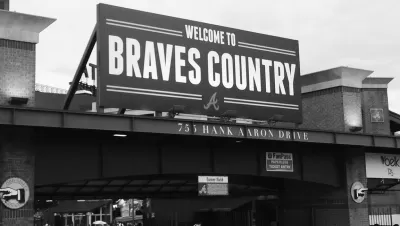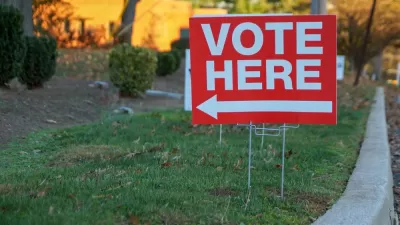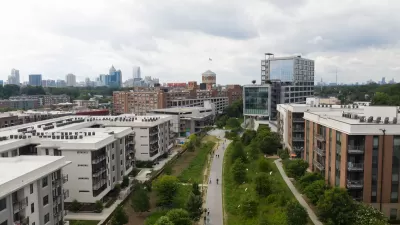The decision of where to locate ballparks, and to what extent the public should subsidize that location, can have ripple effects throughout the land use and transportation systems of a region.

Dan Hardy starts this exploration of ballpark locations by acknowledging the “debate about the wisdom of subsidizing private sector entertainment” but also that “there’s definitely a historic synergy between an urban ballpark and its environs.”
Hardy details the many varieties of case studies offered by the location of ballparks around the country—the most historic (Wrigley and Fenway) being located on transit lines and the recent trend of moving ballparks close to Downtown (starting in Baltimore, but also in Denver, San Francisco, and San Diego, for example).
The outlier of recent experience is Atlanta’s Major League Baseball team, which is in the process of moving to a suburban location—a decision that has inspired plenty of discussion (and consternation) about the choice. Hardy notes the possibility that because the majority of Atlanta’s season ticket holders live in the suburbs, “one can arguably suggest that the new stadium site would reduce total vehicle miles of travel, which is a key goal of balancing land use and transportation.”
FULL STORY: Take Me Way Out to the Ballgame

Planetizen Federal Action Tracker
A weekly monitor of how Trump’s orders and actions are impacting planners and planning in America.

Restaurant Patios Were a Pandemic Win — Why Were They so Hard to Keep?
Social distancing requirements and changes in travel patterns prompted cities to pilot new uses for street and sidewalk space. Then it got complicated.

Map: Where Senate Republicans Want to Sell Your Public Lands
For public land advocates, the Senate Republicans’ proposal to sell millions of acres of public land in the West is “the biggest fight of their careers.”

Maui's Vacation Rental Debate Turns Ugly
Verbal attacks, misinformation campaigns and fistfights plague a high-stakes debate to convert thousands of vacation rentals into long-term housing.

San Francisco Suspends Traffic Calming Amidst Record Deaths
Citing “a challenging fiscal landscape,” the city will cease the program on the heels of 42 traffic deaths, including 24 pedestrians.

California Homeless Arrests, Citations Spike After Ruling
An investigation reveals that anti-homeless actions increased up to 500% after Grants Pass v. Johnson — even in cities claiming no policy change.
Urban Design for Planners 1: Software Tools
This six-course series explores essential urban design concepts using open source software and equips planners with the tools they need to participate fully in the urban design process.
Planning for Universal Design
Learn the tools for implementing Universal Design in planning regulations.
Heyer Gruel & Associates PA
JM Goldson LLC
Custer County Colorado
City of Camden Redevelopment Agency
City of Astoria
Transportation Research & Education Center (TREC) at Portland State University
Camden Redevelopment Agency
City of Claremont
Municipality of Princeton (NJ)





























